Alexander Berezin, an author for Naked Science , wrote a long, rather chaotic, but very interesting, and correctly reflecting the massive pseudoscientific nature of the works of modern pseudoscientists who declared themselves ecologists, an article with an abstruse title: “Seven cruel pests saved marine fish from the respected author of 250 scientific papers” . This article is reproduced in full .
Philippe Munday founded a whole line of research: he was the first to establish that ocean acidification – a consequence of global warming – threatens the sense of smell and the ability to navigate in marine fish. Of course, this poses a threat of their extinction. For a long time, there was only one mystery: how existing fish species survived severe ocean acidification during past climate changes. Now everything is clearing up: it looks like Munday discovered an effect that never happened. Interestingly, 179 more scientists observed him along with him – and now all of them are at the center of a monstrous scandal. Let’s try to figure out the details. South Pacific, coral reef. Mandei’s works made it possible to assume that local fish are threatened with extinction of some species / © ALEX MUSTARD / MINDEN PICTURES
How acid crushed genes: an eschatological threat to marine life
In the past decades, scientists around the world have sounded the alarm about the disastrous threat to marine life from the acidification of the oceans. The physical basis of the excitement is simple: CO2 in the air becomes larger, from there it enters the sea water, and there it forms carbonic acid. The sea water is salty, but gradually its pH is shifting more and more, and in the future it can reach a very low level of the Mesozoic times.
At first, it was argued that this would harm the corals: their carbonate skeleton in acidic water should be destroyed. True, it remained unclear how they survived the Cretaceous period (and even earlier – for most of the history of the Earth, the ocean was acidic than today, since there was more CO2 in the atmosphere). Then, it turned out that in reality, at a low pH, corals do not even think to die. On the contrary: they often grow faster than usual and reach large sizes, apparently not particularly suffering from the rejection of a significant part of the carbonate skeleton. True, the press is still writing about the quick death of corals from acidification. But that’s what she and the press is for: scientific journals do not always find a timely reflection in it, and often for years, the scientific community tells about the fact that the scientific world has long been “worked out material”.
Then, 12 years ago, a group of researchers led by Philip Munday announced about a new a terrible threat: pathological changes in the behavior of fish. In the experiment, juvenile fish normally chose places for adult life at a pH of 8.15 (“normal” sea water), but could not do this at a pH of 7.6 (the Mesozoic level expected in the XXII century). The authors concluded:
“If ocean acidification continues, the suppression of the sensory capabilities of fish will reduce the resilience of many marine species.” Translated into ordinary language: many species will become extinct.
Again, the question arises: how have these many species survived past rises in CO2 levels? How do they survive in the areas where rivers flow into the oceans, because the pH of sea water is not even 7.6, but from 5 to 7? Why do marine species exist in river estuaries? Why do many of them climb thousands of kilometers up rivers at all? How do they do it – without being guided in any way, or what? Finally, the cold waters of the deep ocean on the borders with the warm ones have a much higher acidity than ordinary sea water. The “high acidity” boundary in the sea is constantly fluctuating up and down, following the tides and seasonal temperature changes. How did marine fish ever survive evolution if they were disoriented by far less fluctuations in pH than they would in everyday life?
But it is not always accepted to answer such questions, therefore, after the pioneering work of Mandai and co-authors, a wave of others followed. One Monday signed a quarter of a thousand (!!!) scientific papers, dozens of which exactly on this topic.
These incredible discoveries aroused such interest that they were even included in the report of the International Group of Experts on climate change for 2014. Politicians, ahem,
These incredible discoveries aroused such interest that they were even included in the report of the International Group of Experts on climate change for 2014. Politicians, ahem, in theory should draw conclusions based on this crucial information. However, let’s not be dramatic: we highly doubt that politicians read such long texts as the IPCC report (except perhaps their assistants?).
Journalists were also pleased with his work: they covered them with headlines like “Acidification the ocean warps the brains of the fish. ” The success of his new approach – identifying problems in the behavior of fish due to acidification of sea waters – was so phenomenal that many imitators appeared who experimented with a host of other species. Someone found out that acidification affects even on the activity of fish genes .
Or should we write “found out”? However, by the end of this text, the reader will be able to make his own decision on this matter.
A conspiracy of seven to “harm other scientists”
The real bomb exploded in January 2020. Monday is Australian, it’s generally easier to study all these corals and tropical fish outside the laboratory. Seven of his very young colleagues, led by Timothy Clark from Deakin University (also Australia), had one bad habit: to check the strange conclusions of other scientists. And, as we noted above, the idea that fish at pH 7.6 don’t know where to swim is & nbsp; really & nbsp; strange.
Young people with enviable persistence tried to repeat the experiments of Mandai for three years – and they did not find any changes in the behavior of the fish. With this conclusion, they and published in Nature .
John Bruno, an ocean ecologist at the University of North Carolina, reacted rather harshly to the work. All seven he “weird”, “whose whole point of activity is to harm other scientists. Violence was [the main] driving force behind their work. ”
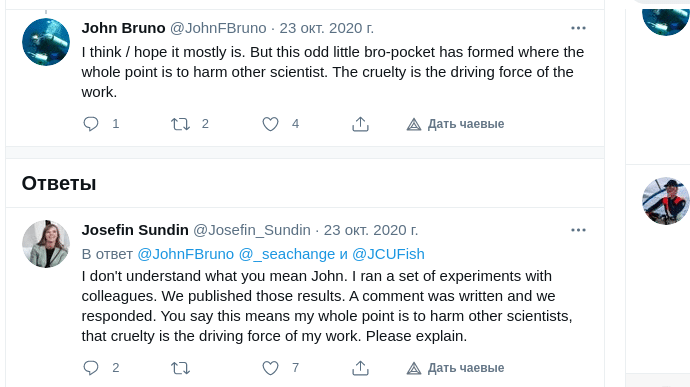
Supporters of this point of view can, if you think about it, understand. Munday’s theme made it possible to make a resonant publication at once to many scientists. Including those not connected with him in any way. On the same topic after 2009, when the Australian made his, uh, discovery, published 85 works, among the authors of which were 179 people from 90 different scientific organizations – and all found “changes in the behavior of fish with increased CO2.” It turns out that if we criticize Mandai, then these 85 works and these 179 scientists should go to the bottom with him.
Perhaps, ocean acidification did not cause any noticeable changes in the behavior of fish, but is this a reason to attack 180 people and their careers at once? Isn’t that cruelty?
Instructions: how not to fall prey to violent pests
We do not share the view that these seven are just violent pests, and here’s why.
Yes, in the modern scientific world it is really customary to follow the hype and exaggerate everything that can sound loud in scientific work. Let’s take some of the loudest headlines Nature :
“Anthropogenic climate change is leading to more desertification of more than five million square kilometers of drylands.
Power, beauty, eschatological scope! After reading the title and abstract of the article, you can imagine five million square kilometers of deserts left by the disastrous global warming. But this is more than the entire European part of Russia. The abstract added that all this affected 213 million unfortunate people – mostly residents of poor countries.
However, if you read yourself text & works (which very few people even among scientists), then it says something very, very different. Firstly, by the word “desertification” for the sake of a catchphrase, the authors meant any reduction in leaf area in a particular area of arid lands. To their credit, they are not hypozhors, but scientists, therefore, in the text, honestly and wrote . Adding: in statistically significant amounts, this happened only on 2.7 million square kilometers (and not more than five, as in the title). Second, “only 0.75 million square kilometers that were negatively impacted by climate change experienced significant desertification … and in only 0.015 million square kilometers of these areas experiencing desertification, we found that climate was the only negative factor.” p>
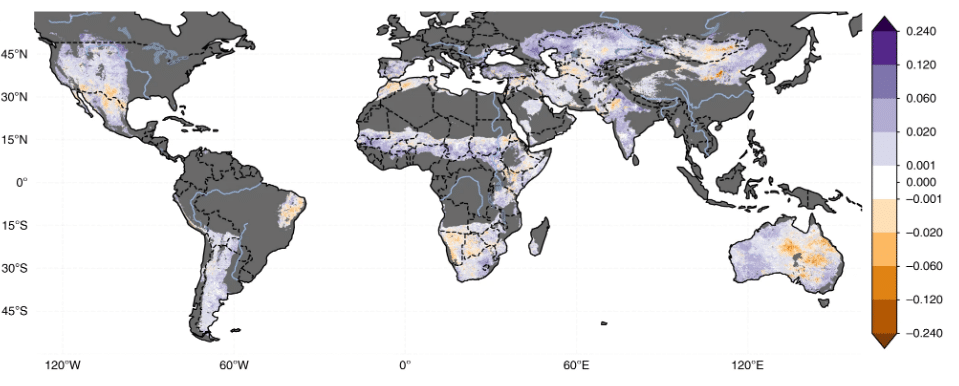
In other cases, the factors could be overgrazing, other economic activities of people – or anything else.
Finally, the authors of honestly : “We also identified widespread global greening – 18 , 0 million square kilometers of drylands.
So the work reports: yes, at 5.43 million square kilometers, global warming has contributed to some degree of leaf reduction. But on more than three times the area, anthropogenic climate change and its components have given serious greening. Of course, the authors did not write how many hundreds of millions of people have benefited from this landscaping. This is understandable, because they have an article about the horrors of warming, and not about its advantages.
Their method is worth admiring: they are crystal-clear. Let the warming turn into deserts “more than five million square kilometers” in their headlines. But in the text, they admitted that they did not, and only on 0.015 million square kilometers it is only a matter of climate. And most importantly, warming has greened a much, much larger area.
In other words: in modern science, nothing prevents the discovery of landscaping, and the title and abstract to write about desertification. Nothing prevents to raise the area of desertification to an area where there is any (even slight) decrease in leaf area (although these are different things). Nothing prevents a word from giving out the fact of landscaping in the abstract of the article. But for the most stubborn, reality still needs to be designated, albeit hidden in the bowels of the text. Then they won’t pick on you, and then you are an honest scientist.
And what do we see in the case of Mandai? Alas, he did not adhere to these basic rules of comparatively honest scientific writing. What prevented him from doing as the authors of the article in & nbsp; Nature & nbsp; about “More than five million square kilometers of desertification”? Why couldn’t he write in the title that fish cannot navigate in acidified waters, and explain in the text that they can? By adding a ritual phrase of the form to make the work more relevant: “it’s just that sometimes their reactions are slightly different, without adaptive consequences, but are they different?” In the end, even the ability of people to navigate in space sometimes changes for no reason: living beings are not machines, random fluctuations in their behavior can always be found. Surely, something could be found in fish.
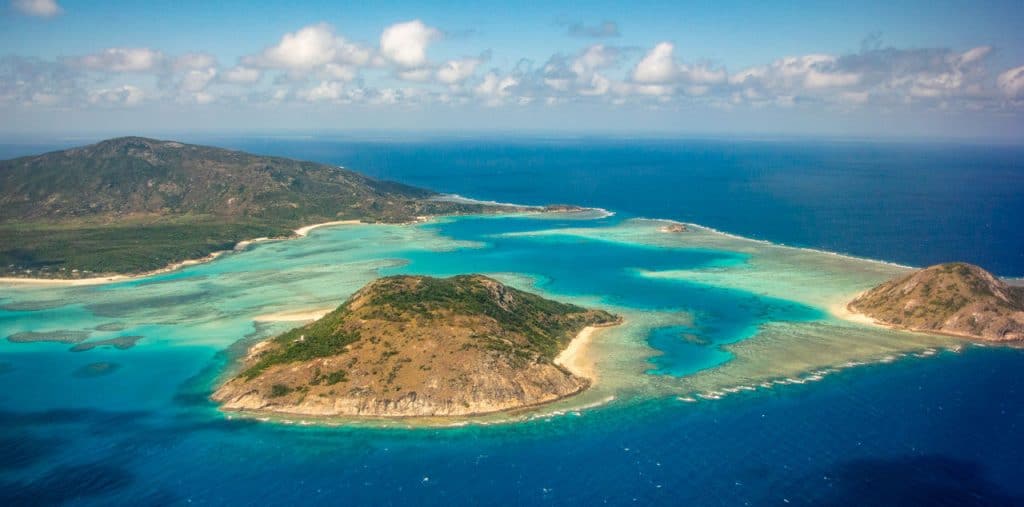
It was possible to copy the approach of the authors who wrote about “desertification”, and from the other side. What prevented Munday from choosing one third of the most sluggish of the studied fish in a laboratory aquarium with acidified water? And then describe their inability to navigate and compare this subgroup with the ability to navigate in the control group, with non-acidic water?
Nothing got in the way. Then, in the title of his landmark work in 2009, it would be quite easy to write “Acidification disorients fish.” And in the text itself to explain that not all, but a minority, but what’s the difference, because it disorients, and so what, that with the majority in acidified water this does not happen.
Instead, Munday took the path of least resistance: he found whole groups of & nbsp; fish that no one else can find with them. Why would you do that? Is it ethical? What is ethical there: it is, after all, impractical. After all, such work can be refuted. This is exactly what the seven “weird” young people did.
Conclusion: you have to be like the authors writing about desertification against the background of global greening. Don’t be like Monday. You should be able to follow the hype without losing face.
What is real cruelty?
Although we do not see any particular wrong in the exposing work of the seven young scientists, they nevertheless committed some cruelty. In the summer of 2020, they, at first hiding this fact, sent requests to organizations that gave money for the work of Mandai and his co-authors. This is the Australian Research Council, the US National Science Foundation and the US National Institutes of Health – totaling who gave millions of dollars for dozens of works by Mandai.
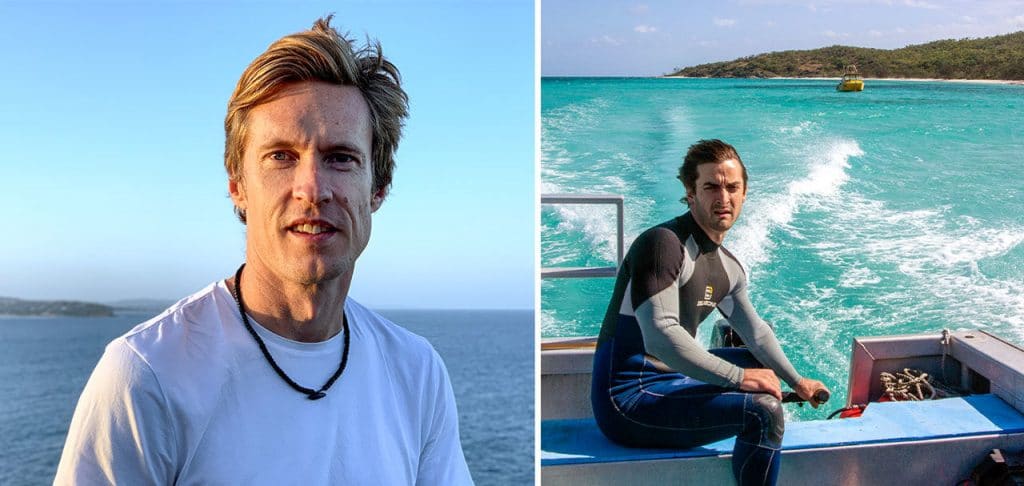
In the request, seven reported that they see signs of data manipulation in a number of works, where Munday is one of the authors. In particular, they emphasize publications in the “high-profile” journals – one in & nbsp; Science , and the other in & nbsp; Nature Climate Change . Finally, they found witnesses who previously worked in the same laboratory with Mandai and claim that one of their colleagues – Mandei’s co-author – falsified some of this data.
This was already really cruel. It’s one thing to make the scientific community understand that scientist X and his co-authors have described something that does not happen in life. And it is quite another to encroach on the money of the scientist X and his co-authors.
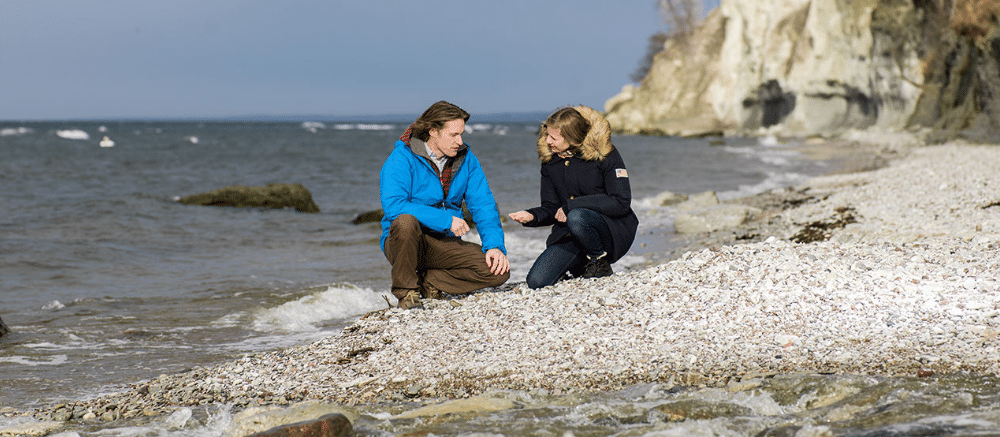
It’s easy to see why Munday called these allegations” disgusting “and” defamatory. ” In the end, in April of this year, he left the university where he worked earlier and moved to Tasmania – a region, frankly, much more deaf, and with a much worse climate than his previous place of work. Of course, Munday stresses that his move has nothing to do with accusations – and we, of course, have no reason not to believe him. As well as not believing his resonant works on massive violations in the behavior of fish under the influence of ocean acidification.
Epidemic of sensational results
In the story with Mandey, there would be nothing wrong if he just tried for himself. Well, a person wants bright scientific results. It is rather difficult to get them by means of reproducible (by other scientists) experiments: you have to think a lot. Well, I slightly pulled the conclusions. “No, and who does not, you name it?” – could say an Australian in response to this reproach. And it is easy to name works about desertification, describing, in fact, global greening – and many others.
But the trouble is that Munday not only overstepped the boundaries in the field of drawing conclusions, but also infected his young colleagues with this pragmatic, but cynical approach. He was defending Oona Lönnstedt of Sweden. Returning to her native Sweden, she began to make work about destructive microplastics – small pieces of plastic bags and synthetic tissues making their way inside each of us. Most of the work on microplastics does not study its effects on humans, but concentrates, like Leenstedt’s, on marine creatures. It is understandable: the destructive influence of man on nature is a fashionable topic, it is easier to advance there, but it is difficult to study people seriously (for example, it is difficult to open them at the request of a biologist), for a long time and with glory it is more difficult.
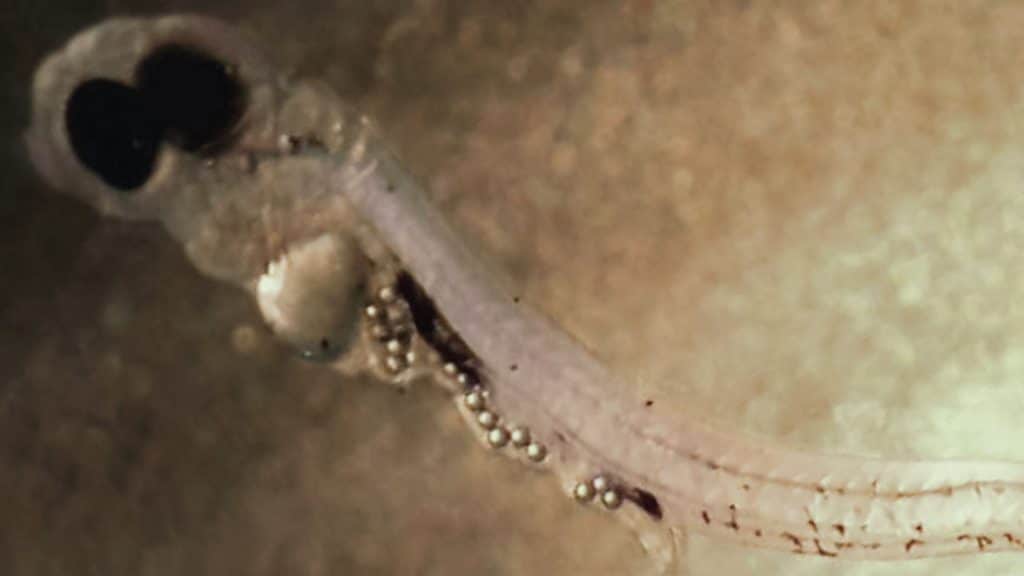
There she almost immediately discovered that Baltic perch fry prefer to swallow microplastics instead of food, which does not gives them nutrients and – you guessed it right – & nbsp; changes & nbsp; his behavior. In the same way that CO2 changes the behavior of the fish in Mandai. One to one. The breakthrough article is easy came out; in Science , for where else to come out with such revolutionary research.
But there were minor difficulties. Some strange people – just the same “cruel pests” that then attack Mandai himself – started declare that they have not seen Leenstedt conduct such research at all on real perches. Fortunately, they were at the same research station and, in theory, should have noticed such studies. “Cruel pests”, of course, turned to Uppsala University, where a promising young researcher worked, and there they were given a rather tough shake .
Those who conducted the initial investigation did not found “no evidence of research misconduct in Leenstedt’s article … published in & nbsp; Science & nbsp; June 3, 2016 … We recommend that Uppsala University not carry out any further investigations and instead take steps to recover the reputation of the accused [authors]. ”

Leenstedt said is simpler: those who blamed her are “just jealous.” However, the “cruel saboteurs” rested in earnest and collected documents for another visit to the target. The Central Committee for the Ethical Oversight of Scientific Research in Sweden in the summer of 2017 is still admitted ” Scientific dishonesty “found in research. After another long eight months, Uppsala University finally announced that the data from this work had been fabricated.
The male co-author Leenstedt immediately declared that he was honest, and the co-author deceived him by not making correct initial observations. But any person who has a rough idea of how biological research works will raise an eyebrow skeptically at this point. Let’s be honest: a co-author (in a work with only two authors), who did not even notice that his colleague did not conduct research, is most often either not entirely sincere, or a worthless biologist.
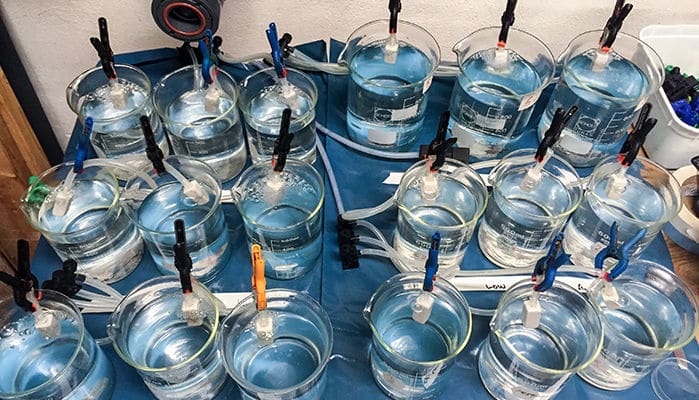
It was then that the members of the “gang of seven” thought: what is behind other works on “changing the behavior of fish” under anthropogenic influence? The shamelessness of the obvious deception of the Swede shocked one of them so much that he asked himself a direct question: how many more scientific papers can be the same complete fantasy?
The position of the seven was attacked by Mandei for their criticism of his student Lenstedt. In 2016, he wrote in an email to her:
“It seems like Clarke and Jutfelt [members of the gang of seven – N.S.] are trying to build their careers by criticizing other people’s work. I can only assume that this is because they do not have good ideas of their own to fill their time. ”
Hans-Otto Portner, co-chair of one of the three working groups of the International Commission on Climate Change, generally thinks similarly:” Building a career on judging what other people have done is wrong. If such a case floats out of the [scientific] community, it will be harmful, because the community as a whole will lose credibility. ” Note: Portner emphasizes the importance of whether this comes out, rather than whether the judgments are right.

; (DATA) MUNDAY ET AL., NATURE CLIMATE CHANGE
, 4, 487 (2014)
Well, Munday and Portner may be right about something. It is possible that the “gang of seven” simply wants to advance themselves in science. Even so, it should be welcomed.
The problem is not whether marine fish lose their ability to navigate as the oceans acidify. Anyone who has studied at school can guess that this is, to put it mildly, doubtful – otherwise salmon fish would not have been able to master the rivers of Wrangel Island in recent years, the pH of which (like all rivers) is much lower than in Mandai’s works. Likewise, sharks could not successfully live four thousand kilometers up the Amazon – with its pH below five. A schoolchild may also be aware that there are many sources of water rich in CO2 at the bottom of the ocean, and fish live there without experiencing any loss in orientation.
The problem is that scientists like Munday, who discover effects that any thoughtful student can easily doubt, discredit not themselves, but science as a whole. Seven “cruel pests” are the real heroes of modern science. Even if you just wanted to make a career by destroying other people’s scientific works.
